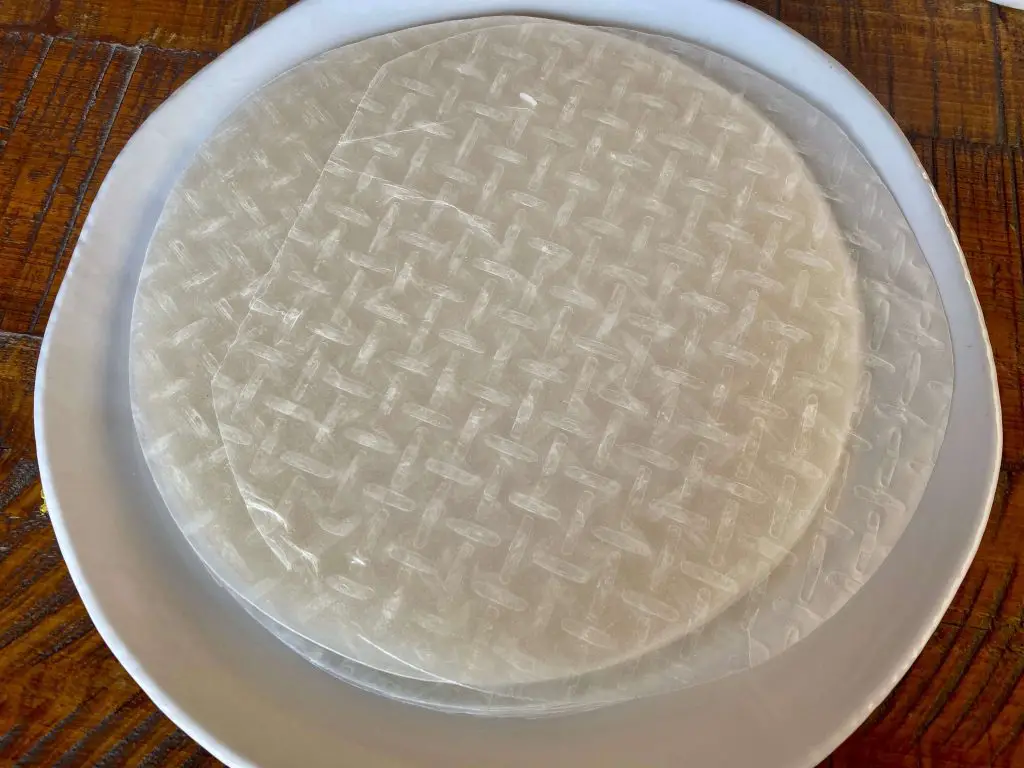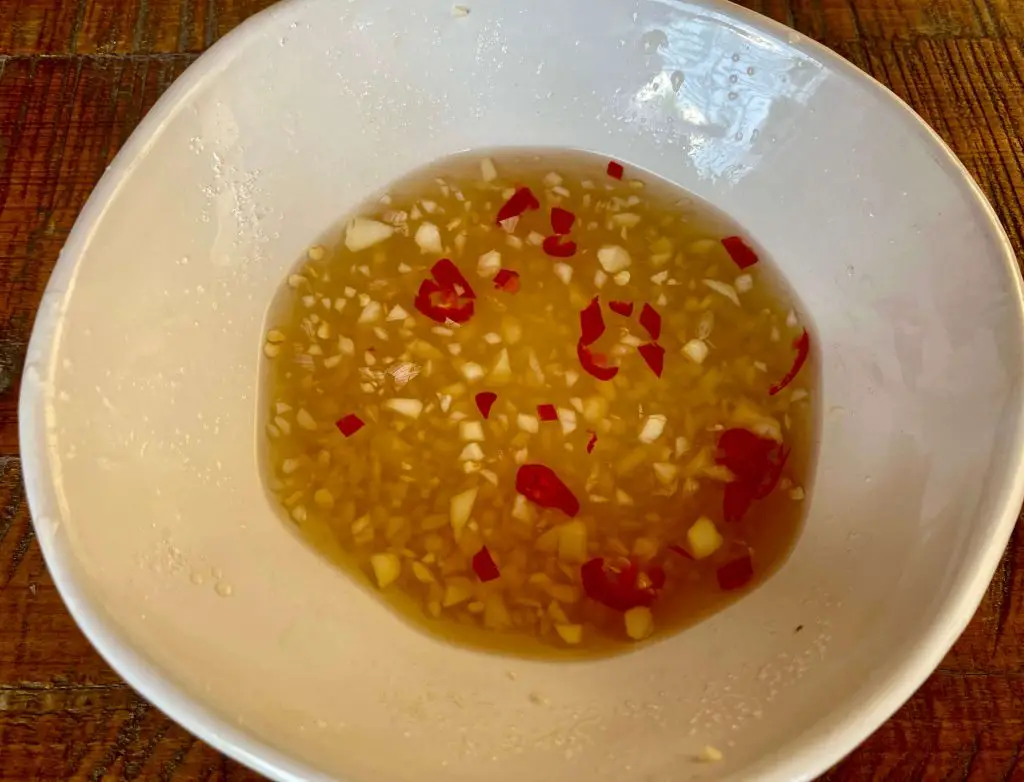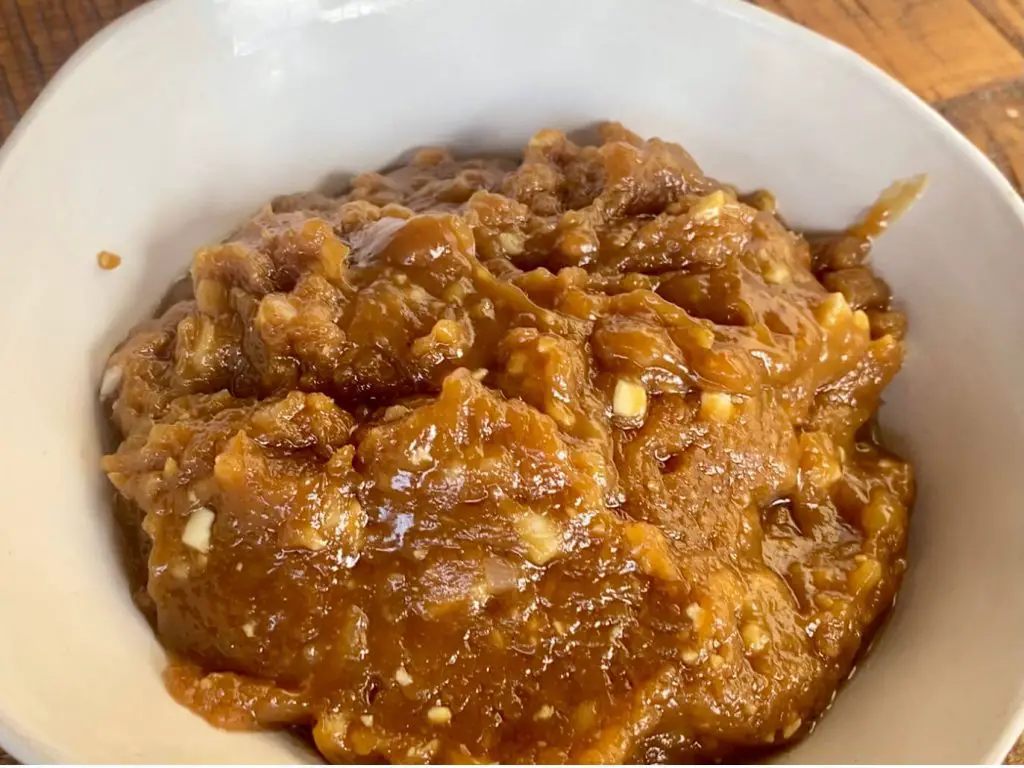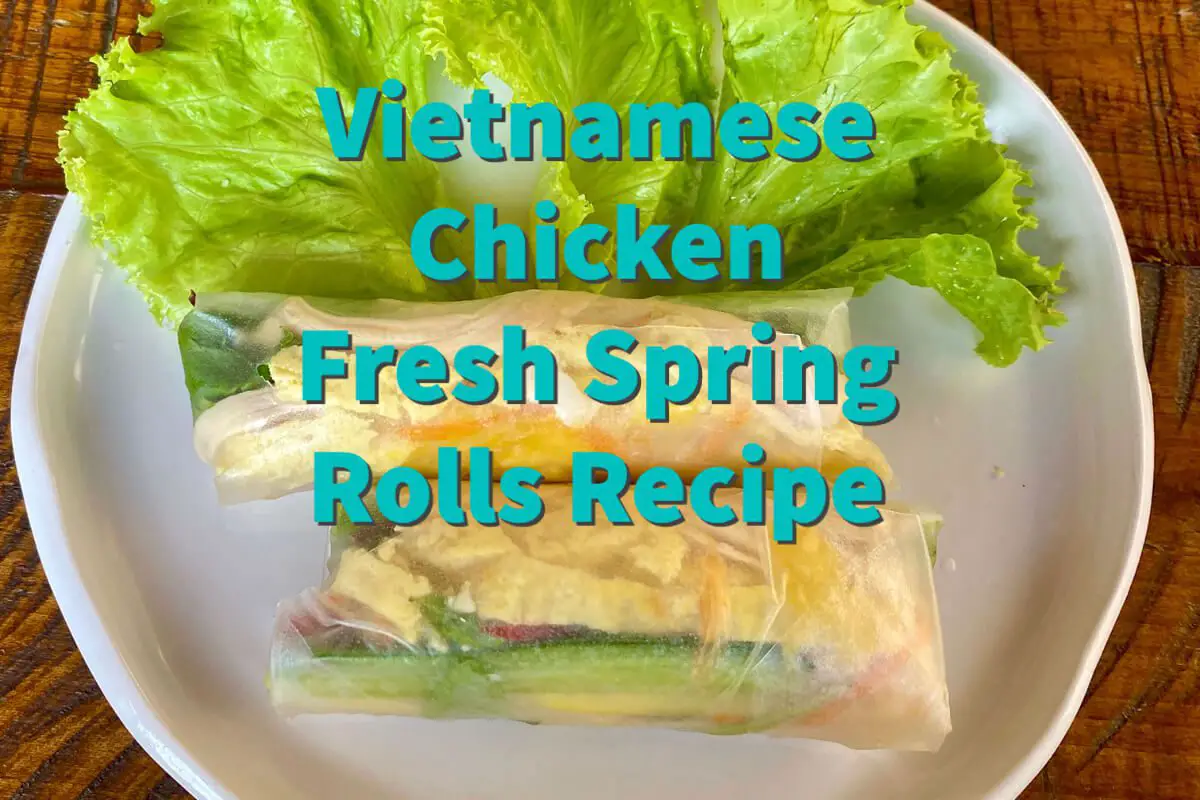These Vietnamese chicken fresh spring rolls are one of my favorite Vietnamese fresh spring rolls. The Vietnamese chicken fresh spring rolls are fantastic with any of these Vietnamese dipping sauces.
To Go Straight To The Vietnamese Chicken Fresh Spring rolls With Vietnamese Dipping Sauces Recipe and Video – Click On The Link Below:
Jump to RecipeTable of Contents
- About The Ingredients for Vietnamese Chicken Fresh Spring Rolls
- Tips for Rolling Your Fresh Spring Rolls
- Vietnamese Spring Roll Sauces:
- Other Spring Roll Versions
- Keto Version Of The Fresh Spring Rolls
- Vietnamese Chicken Fresh Spring Rolls With Vietnamese Dipping Sauces Recipes
- Frequently Asked Questions
CNN Travel rates Vietnamese fresh spring rolls as one of the top 50 foods globally; when you try these fresh spring rolls, you will understand why they are so popular.
To learn more about Vietnamese fresh spring rolls and why some people call them salad rolls or summer rolls, read our blog Vietnamese Fresh Spring Rolls Vs. Salad Rolls Vs. Summer Rolls by clicking here. This blog is filled with information about these wonderful Vietnamese fresh spring rolls.

About The Ingredients for Vietnamese Chicken Fresh Spring Rolls
One of the rules for Vietnamese cooking is there are no exact measurements; this is very true of these spring rolls. The amounts we have listed you can add to or take away from as you want.
You can take out certain vegetables if you do not like certain vegetables. If there are others you really like, you can add them in. Throughout Vietnam, you will find variations of these fresh spring rolls.
When making these Vietnamese fresh spring rolls, there are a few things for you to remember:
- Fresh Ingredients – Vietnamese only use fresh ingredients in their foods. So all the foods for these spring rolls are fresh – usually bought in the morning at the market and then eaten that same day. You can get most vegetables and fruits at your local grocery store.
- Chicken – This spring roll uses shredded chicken. The easiest way to make this chicken is to simply boil a chicken breast and then shred it.
- Fresh Herbs – Vietnamese use only fresh herbs such as mint and cilantro. Also, you can put in some Vietnamese or Thai basil. South Vietnam will use more Vietnamese basil than North Vietnam.
- Cut Up Vegetables and Fruits – You will notice that all our fruits and vegetables are cut up into long thin slices. This is the best way to cut them so they roll easily.
- Fried Egg – There is a fried egg in this recipe. We beat the egg and then cook it very thin, like you would a crepe, and then cut it up in long thin slices.
- Rice Noodles – We can buy fresh and cooked rice noodles in Vietnam. Those not in Vietnam must buy the dried version and boil and cook it. Follow the instructions on the packet. We suggest buying a Vietnamese brand; go to your local Asian grocery store to see what they have.
- Rice Paper – There are many kinds of rice paper but get a Vietnamese brand. Again many grocery stores now carry this or buy it from your local Asian grocery store.
Here are some of our suggestions for other fruits and vegetables you can add to these rolls: bean sprouts, apples, mushrooms, spinach, avocados, yellow peppers, green peppers, and cabbage would also work well inside these fresh spring rolls.

Tips for Rolling Your Fresh Spring Rolls
Here are a few tips to help you to roll your spring rolls. You can watch our video and see how we roll them here in Hanoi, Vietnam. This video was filmed and taken in my home in Hanoi, so sometimes you can hear some of the sounds of Hanoi -it is all part of being authentic and showing your authentic Vietnamese foods and recipes.
Tips to rolling your fresh spring rolls:
- Wet Cloth – Use a wet cotton cloth. We used some cotton napkins. This will help the spring roll wrapped to be wet but not too wet. It will also allow you to roll it easier.
- Brush on the water – We use a kitchen brush to brush on the water to the rice spring roll skin. The trick is that you do not want over wet it, or the skin will break easily. If you watch our video, you can see how little water Suu puts onto the skin.
- Lettuce and herbs are first – When you roll a spring roll, the lettuce and herbs are first. From our video, just a small amount was used at the very top of the fresh spring roll wrapper.
- Fruit and Vegetables – Fruit and vegetables are next. If you watch the video, you can see that just a few pieces are put on.
- Meat – Next, you add the meat and then tuck it under. Make sure as you do this that you are holding the roll tightly.
- Noodles – Finally, add some noodles on top.
- Fold in the Sides – Fold in the sides. You should not need water, but you can add a bit if you do.
- Roll Tightly – Then roll the spring roll tightly and close.
- Do not overstuff – One error a lot of people make is that they try to overstuff the spring roll. Do not overstuff it or it will not roll correctly.
- Do not over-wet – The spring roll’s fruits, vegetables, and other ingredients have water in them. For this reason, the roll will start to get wet, so you do not need to overwet, or the skin will break apart.

Vietnamese Spring Roll Sauces:
We have a recipe for two dipping sauces. One sauce is used in North Vietnam, and another is the popular southern peanut sauce. You can make one or do like we do, make both.
I love these sauces so much that I will mix them when I eat my fresh spring rolls. I find the flavors go together very well.

Here are the differences between these two fresh spring roll dipping sauces:
Nước Chấm Vietnamese Spring Roll Sauce
Nước chấm means sauce in Vietnamese, and this fish sauce mixture is used a lot in Vietnam. The sauce comprises fish sauce, water, lime, garlic, red chili peppers, and sugar. You can top off the sauce with ground pepper just before serving.
This sauce is used for many Vietnamese dishes, particularly in North Vietnam. In fact, in North Vietnam, fresh spring rolls are always eaten with this dipping sauce.

Nước Chấm Vietnamese Peanut Sauce
The Nước Chấm Vietnamese Peanut Sauce is a sauce used in South Vietnam to eat fresh spring rolls. This sauce needs to be heated up and cooked, but it is a great dipping sauce for the spring rolls and probably most Westerners’ favorite.
In our recipe, we used smooth peanut butter and then add freshly ground peanuts for a topping. This gave the sauce a nice crunch.
Other Spring Roll Versions
We have made several other versions of this same spring roll. Each of them has a recipe and video.
Here are some of our other versions of these wonderful Vietnamese fresh spring rolls and a link to the recipe:
- Shrimp Fresh Spring Rolls With Vietnamese Dipping Sauces – Go to recipe by clicking here.
- Vegetarian Fresh Spring Rolls With Vietnamese Dipping Sauces – Go to recipe by clicking here.
- Vegan Fresh Spring Rolls with Vietnamese Dipping Sauces – Go to recipe by clicking here.
Keto Version Of The Fresh Spring Rolls
We realize that many people now are eating keto foods. The good thing is you can have a lot of the taste and flavor of these fresh spring rolls while eating as a keto diet.
To make a keto version of these spring rolls, here are our suggestions:
- Eliminate Rice Noodles – You can eat these without the rice noodles. They will also taste great. Add in some bean sprouts or even cabbage instead.
- Keto Fruits And Vegetables – You can try to add in keto-friendly fruits and only use keto-friendly vegetables.
- Wrap With Lettuce – instead of the rice paper, wrap the spring roll with lettuce instead. Wrap them as you eat them.
- Use Monk Fruit Sugar – For the sauces use Monk Fruit sugar instead of sugar to make it a sugar-free sauce.
- Coconut Oil – Use coconut oil for the peanut sauce or cooking.
- Peanut Butter – Use a sugar-free keto peanut butter, then add a bit of monk fruit sugar if you want to sweeten up the peanut sauce a bit.
- Hoisin Sauce – Make your own keto hoisin sauce or use a keto-friendly soya sauce.
Vietnamese Chicken Fresh Spring Rolls With Vietnamese Dipping Sauces Recipes
At A Bus On A Dusty Road, we talk about everything about travel, life, and ex-pat living. We are all about “Living Life As A Global Citizen.” We explore social, cultural, and economic issues and travel.
We would love to have you be part of our community. Sign up for our newsletter to keep up-to-date by clicking here. If you have any questions, you can contact me, Anita, by clicking here.
Listen to our Podcast called Dusty Roads. You can find it on all major podcast platforms. Try out listening to one of our podcasts by clicking here.
Subscribe to our A Bus On A Dusty Road YouTube Channel filled with great videos and information by clicking here.
Frequently Asked Questions
Do I need a visa to travel to Vietnam?
Yes, most visitors to Vietnam require a visa. However, some countries have visa exemption agreements with Vietnam. It’s best to check with the Vietnamese embassy or consulate in your home country for specific visa requirements.
What is the best time to visit Vietnam?
The best time to visit Vietnam is during the spring (February to April) and autumn (August to October) seasons when the weather is generally pleasant. However, Vietnam is a diverse country with regional variations in climate, so it’s advisable to research the specific regions you plan to visit.
What are the must-visit places in Vietnam?
Some popular destinations in Vietnam include Hanoi (the capital city), Ho Chi Minh City (formerly Saigon), Ha Long Bay, Hoi An Ancient Town, Hue Imperial City, and the Mekong Delta. Each offers unique cultural and natural attractions.
Is it safe to eat street food in Vietnam?
Yes, street food in Vietnam is generally safe and delicious. It’s a significant part of Vietnamese culinary culture. However, it’s recommended to eat at busy stalls with high turnover, ensuring the food is fresh and cooked at high temperatures.
What are some must-try Vietnamese dishes?
Some iconic Vietnamese dishes include phở (noodle soup with beef or chicken), bánh mì (French-inspired baguette sandwich), gỏi cuốn (fresh spring rolls), bún chả (grilled pork with vermicelli noodles), and cà phê đá (Vietnamese iced coffee).
Are there vegetarian options available in Vietnam?
Yes, Vietnam has a variety of vegetarian dishes available. Many Buddhist temples and restaurants offer vegetarian options, and certain dishes can be modified to be vegetarian-friendly. Just ensure you communicate your dietary preferences clearly.
How can I adapt to the local food and avoid stomach issues?
To adapt to the local food and minimize stomach issues, start by gradually introducing new dishes to your diet. Opt for cooked and freshly prepared food, avoid tap water (stick to bottled water), and peel fruits before eating them.
What is the local currency in Vietnam, and can I use credit cards?
The local currency is the Vietnamese đồng (VND). While cash is widely used, credit cards are accepted at many hotels, upscale restaurants, and tourist-oriented establishments in major cities. It’s advisable to carry some cash for smaller businesses and rural areas.


